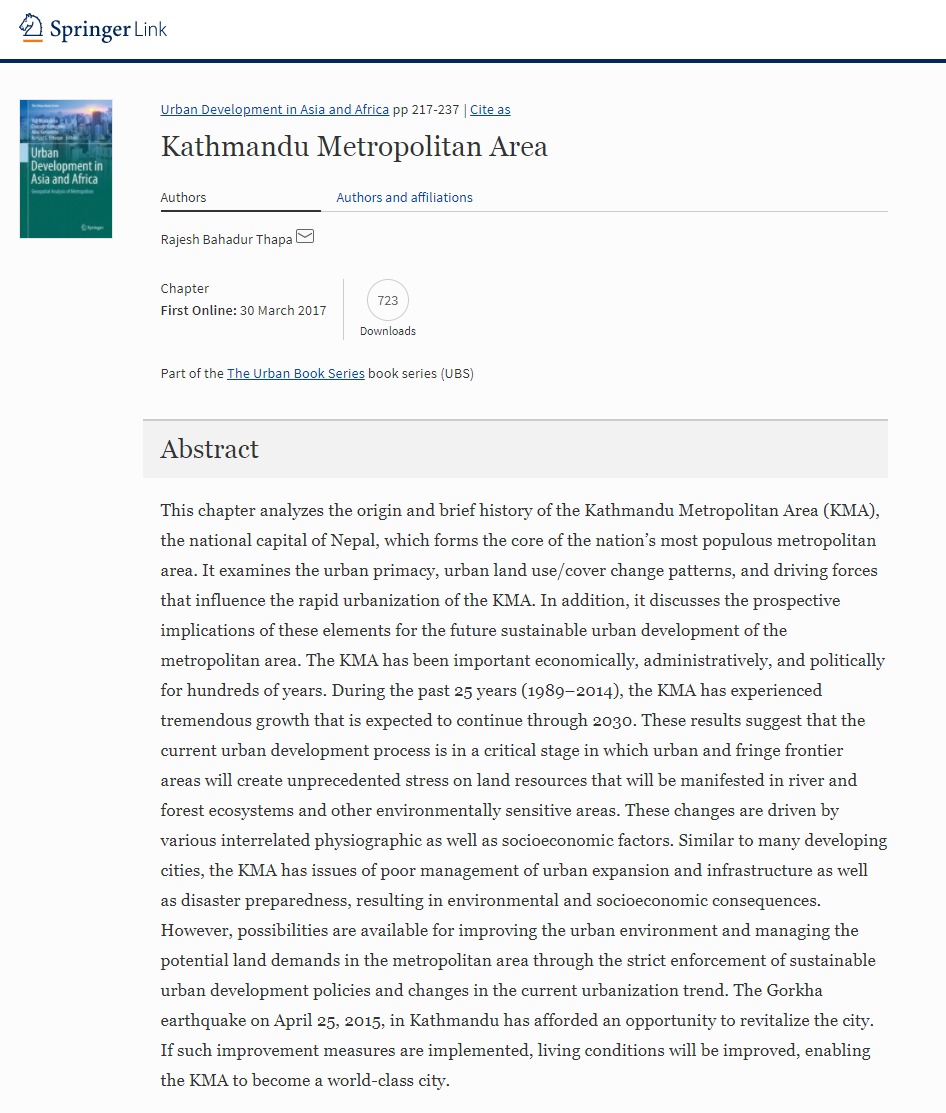
Thapa, RB (2017) 'Kathmandu Metropolitan Area.' In Y. Murayama, C. Kamusoko, A. Yamashita and R. C. Estoque (eds), Urban Development in Asia and Africa: Geospatial Analysis of Metropolises, 217-237. Singapore, Springer Singapore. http://dx.doi.org/10.1007/978-981-10-3241-7_11 This chapter analyzes the origin and brief history of the Kathmandu Metropolitan Area (KMA), the national capital of Nepal, which forms the core of the nation’s most populous metropolitan area. It examines the urban primacy , urban land use/cover change patterns, and driving forces that influence the rapid urbanization of the KMA. In addition, it discusses the prospective implications of these elements for the future sustainable urban development of the metropolitan area. The KMA has been important economically, administratively, and politically for hundreds of years. During the past 25 years (1989–2014), the KMA has experienced tremendous growth that is expected to continue through 2030. These results suggest that the current urban development process is in a critical stage in which urban and fringe frontier areas will create unprecedented stress on land resources that will be manifested in river and forest ecosystems and other environmentally sensitive areas. These changes are driven by various interrelated physiographic as well as socioeconomic factors . Similar to many developing cities, the KMA has issues of poor management of urban expansion and infrastructure as well as disaster preparedness, resulting in environmental and socioeconomic consequences. However, possibilities are available for improving the urban environment and managing the potential land demands in the metropolitan area through the strict enforcement of sustainable urban development policies and changes in the current urbanization trend. The Gorkha earthquake on April 25, 2015, in Kathmandu has afforded an opportunity to revitalize the city. If such improvement measures are implemented, living conditions will be improved, enabling the KMA to become a world-class city.